Most of our population speaks more than one language, yet many organizations make the mistake of offering English-only websites. Speaking their language is a powerful strategy to connect with a diverse audience.
Neuroimaging shows that people’s brains respond more emotionally when they hear their native tongue. Offering a multilingual website is fundamental for growing your global reach, earning customer trust, and dominating international markets.
What Is a Multilingual Website?
A multilingual website makes content accessible in different languages. But it’s more than plugging words into an online translator, copy-pasting them, and calling it a day. An effective multilingual website can convey the same message, core values, and brand personality in many languages.
Often, a toggle button or an options feature allows users to choose their desired language manually—other websites auto-translate based on location.
Examples of Multilingual Websites for Inspiration
Before we dig deeper, check out some examples of multilingual websites from brands worldwide.
1. Edgar Cooper: localized storytelling
Edgar Coop’s website perfectly captures the brand’s personality through its vibrant design, cute illustrations, and friendly tone. The company weaves storytelling into the website, highlighting the origin story and hands-on process behind their high-quality pet food.
Users can easily toggle between location and language options to view relevant products and content. As you browse the different language versions of the website, effective multilingual translation preserves the brand’s sentiment.
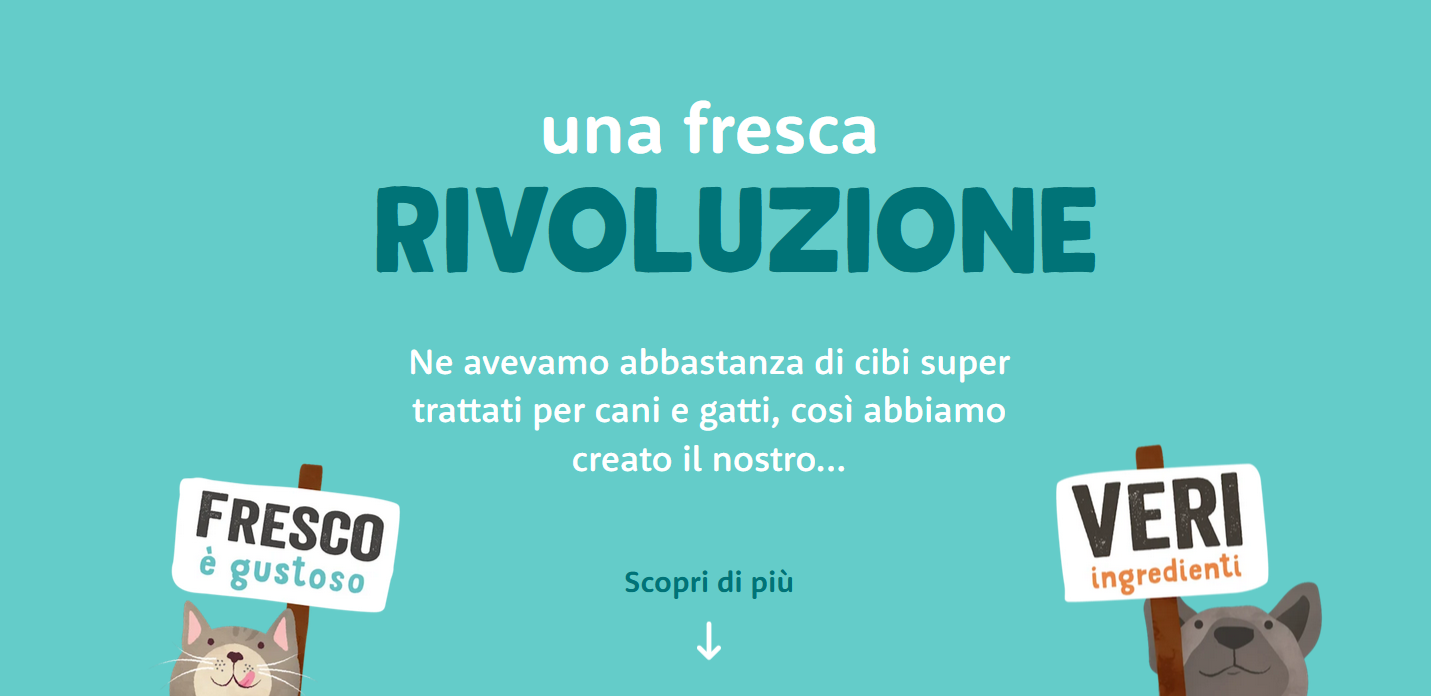
Italian web translation via Edgar Cooper
2. Nikon Canada: product pages for regional markets
Canada’s official languages are English and French. Recognizing this, camera brand Nikon Canada ensured its website is available in these languages to meet the needs of its diverse target audience.
It uses the translating plugin Weglot, enabling a smooth language switching and effective SEO. Its resources page, filled with articles and blogs, was translated into French.
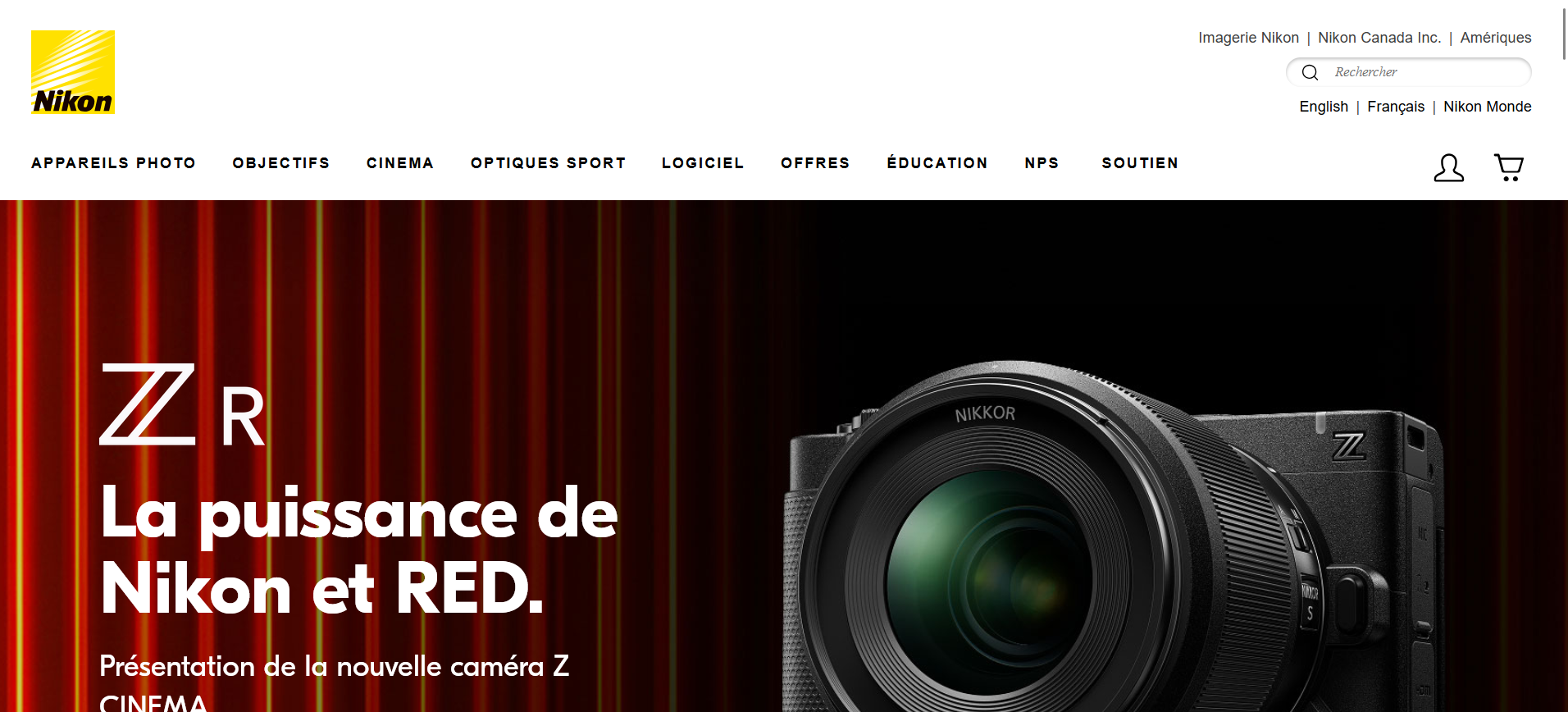
French website via Nikon Canada
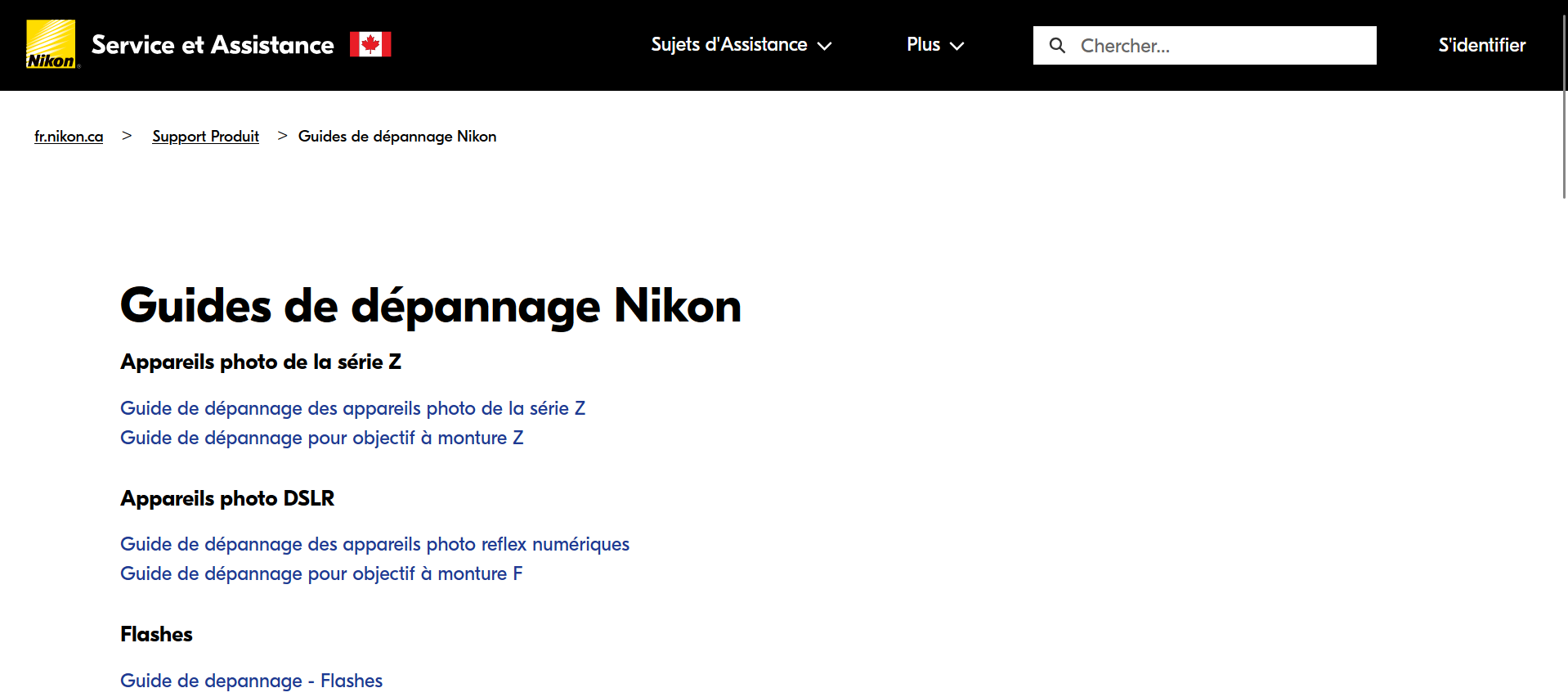
French resource page via Nikon Canada
3. Nielsen: regionalized research content
Nielsen is a global company that provides audience insights and data in over 100 countries. It caters to a diverse market that speaks several languages.
Catering to this need, Nielsen translated its website into 13 languages, including Korean, Bahasa Indonesian, and Brazilian Portuguese, effectively increasing its accessibility. The website also features an easy-to-navigate design that allows international users to access research and other information.
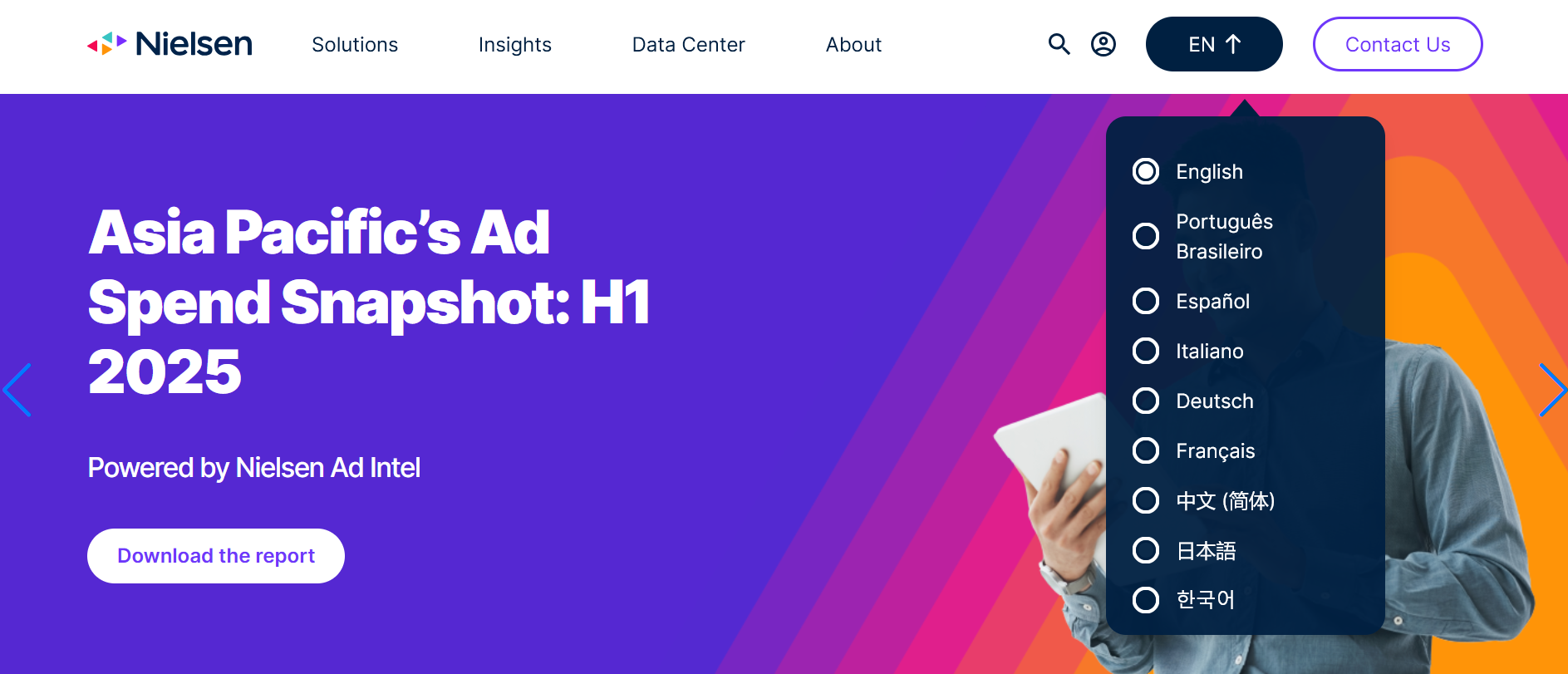
Translation should maintain the regional relevance of the content. Image via Nielsen
4. Cakemail: SaaS with global communication
Cakemail, a Canada-based email marketing company, offers a multilingual website to expand its global reach. In addition to translating the site into Canada’s two official languages, English and French, Cakemail also provides versions in Italian and Spanish.
This multilingual approach allows the company to connect with a wider, international audience and deliver a satisfying customer experience. Additionally, Cakemail’s commitment to multilingual customer support sets it apart, ensuring users can access resources in their preferred language.
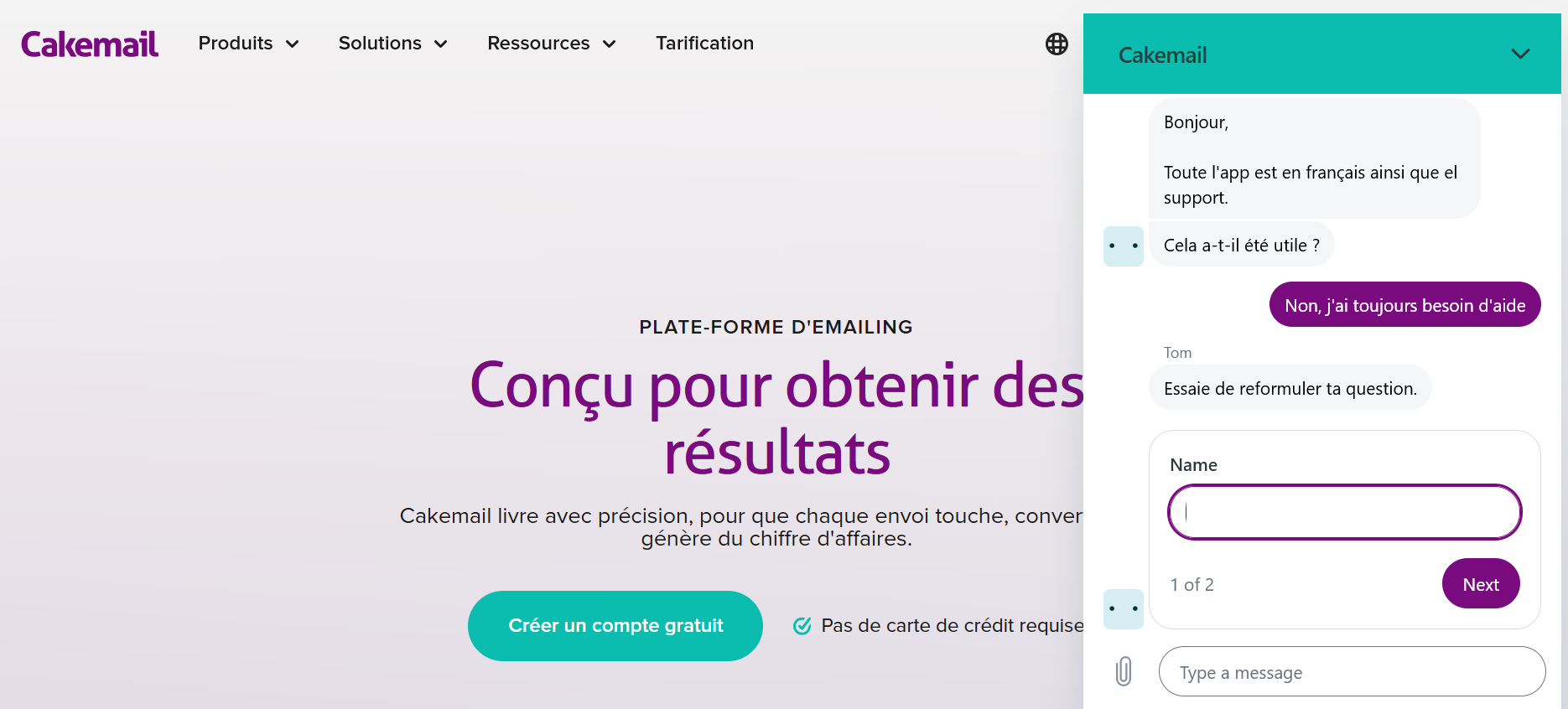
French customer support via Cakemail
5. Gymshark: consistent brand voice across languages
Gymshark is a global brand known for its high-quality sports apparel. With a presence in over 150 countries, Gymshark's multilingual website reaches its diverse audience.
Users can choose their location, and the site automatically adjusts the language and content to match their region. This multilingual approach allows Gymshark to provide a personalized experience and eliminate language barriers for its globally dispersed buyers.
Maintaining a consistent brand voice and pricing across these language versions requires complex multilingual content management, but Gymshark executes it well.
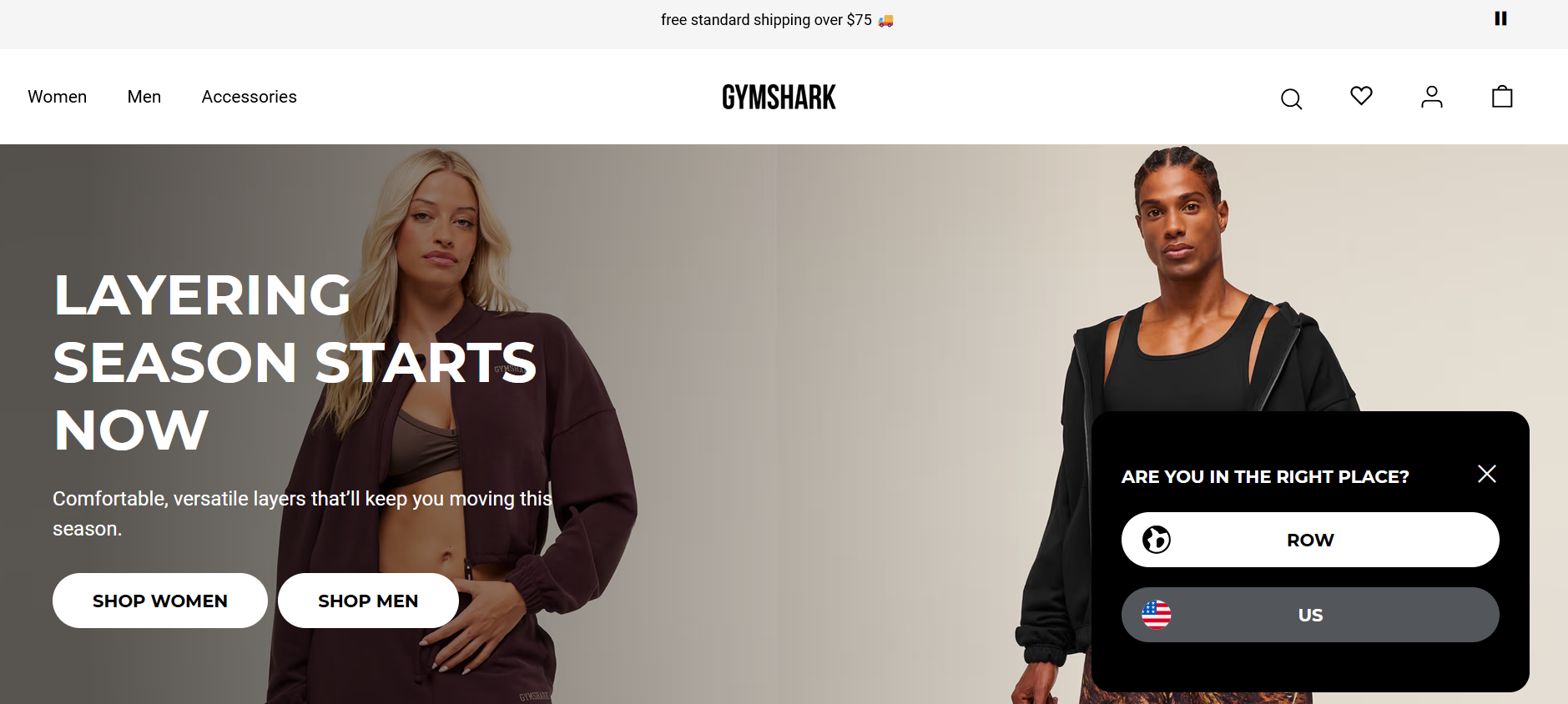
Homepage in English via Gymshark

Swiss version via Gymshark
How to Build a Multilingual Website
Creating a multilingual website varies according to goals, needs, and the nature of the business. Below are the fundamental steps to get started.
Step 1: Define your target languages
Choosing target languages for your multilingual site should be driven by your audience’s demographics. Consider their location and native languages. For instance, if you have Canadian visitors, create a bilingual website in Canadian English and French.
Analyze your website traffic to identify high-demand regions. If you’re seeing an uptick in visits from Latin America, try to incorporate their primary languages, such as Spanish. For global brands, it is best to focus on the top worldwide languages: English, Mandarin, Spanish, Hindi, and French.
Step 2: Decide which content to translate
Selective translation is strategic, as fully translating everything can lead to loss of meaning and cultural disconnect. That said, prioritize key pages like product info, homepage, and contact. This allows you to easily update relevant content so all visitors get the latest in their language.
Of course, some text that does not make sense when translated can remain in your primary language—for instance, company name, branded product names, and other on-brand terms.
Step 3: Create a budget and resources plan
Effective budgeting begins by determining your translation needs, such as automating machine translation with software/plugins for speed and cost-efficiency or hiring professional translators for higher-quality output. Then, factor in ongoing maintenance, like updates and bug fixes.
If you plan to invest in SEO, allocate resources to improve visibility, including implementing hreflang tags and language-specific URLs. Finally, focus your budget and resources on translating the most relevant content for your audience.
Step 4: Choose a translation method
The final step is determining how to translate your website into multiple languages—manual translation, professional translation services, or integrating translation plugins and tools. Your choice depends on your requirements, budget, and website goal.
- Manual translation: A manual translation, conducted word by word by an assigned in-house translator who fully understands your content, can lead to accurate translation. However, this can be arduous and take a lot of time to complete. Consider a manual translation if you have limited text on your website.
- Professional translation services: Engage third-party agencies specializing in localization to ensure your translated content aligns with the cultural context of your target language. Experienced translators are ideal for websites with technical content, like tech- and legal-focused pages, that demand high-level accuracy. While more expensive, hiring translation services ensures you have a dedicated team for your localization needs.
- Translation plugins and tools: Automatically translate your website using software plugins and tools. Aside from managing your translations on the go, this method is quick and inexpensive. Translation plugins and tools also have advanced features for direct content modification and SEO capabilities. Multi-language menus are available for users to toggle, allowing websites to be automatically translated based on their language selection or location.
Choosing a Translation Platform or Plugin
Learn how the following translation platforms and plugins can benefit your multilingual website.
WPML
WordPress Multilingual Plugin (WPML) is a WordPress plugin that simplifies the translation process. Its translation dashboard allows users to assign and monitor translation tasks easily.
For e-commerce sites, WPML can automatically convert prices to the visitors’ local currency using real-time exchange rates. The plugin also features string translation, ensuring a seamless multilingual experience across your website.
Finally, WPML’s SEO capabilities, including translated metadata and hreflang tags, help your multilingual content rank higher in search results.
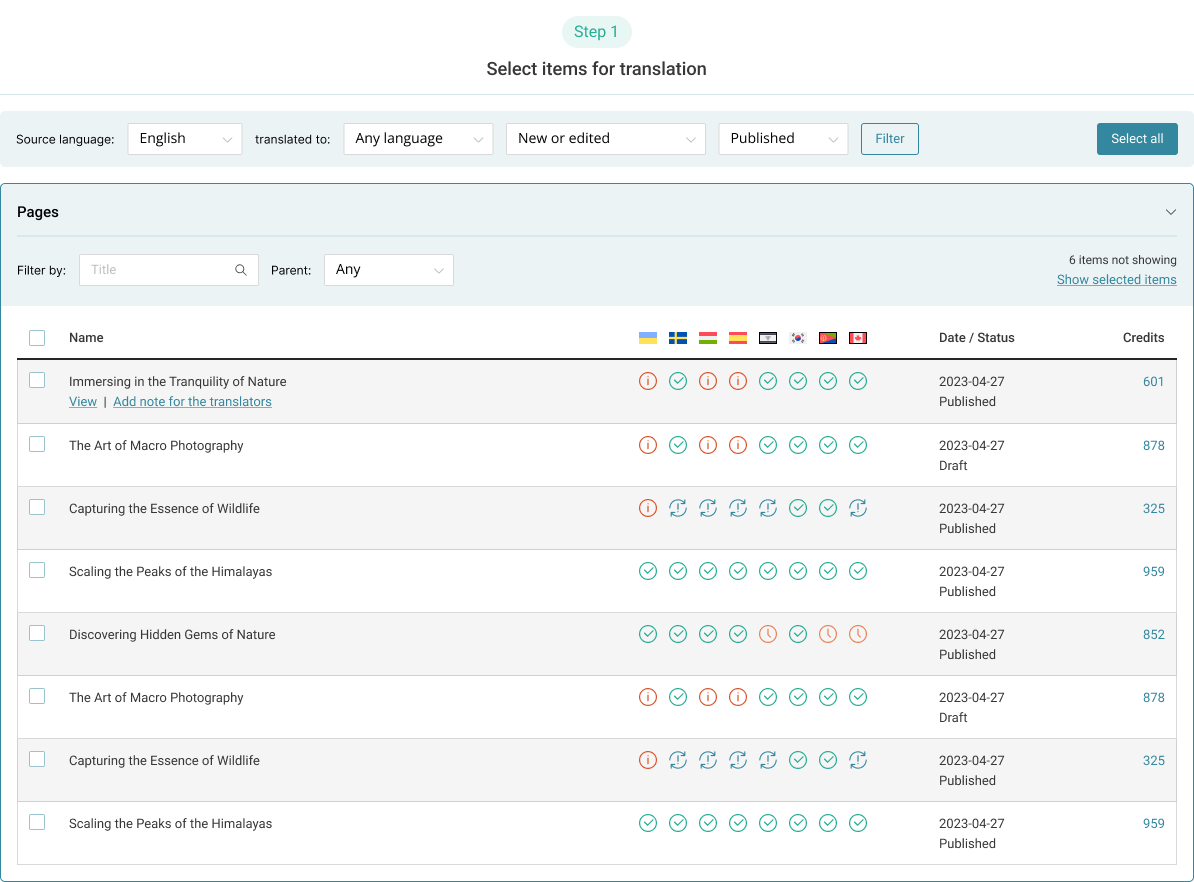
Translation dashboard via WPML
Key features: * Translation Dashboard * Multicurrency Capabilities * String Translation * Multilingual SEO
Weglot
Weglot is a user-friendly translation tool that requires no coding experience, making it a more straightforward solution than WPML. Its plug-and-play approach allows easy real-time editing, ensuring no new content goes untranslated. Weglot also features a visual translation editing function, where users can instantly update translations that seem incorrect or out of context.
Furthermore, the platform customizes the user experience based on their location, automatically displaying the appropriate language version and currency. If it detects that the user is from Germany, the German website will come up, and the currency will adjust automatically.
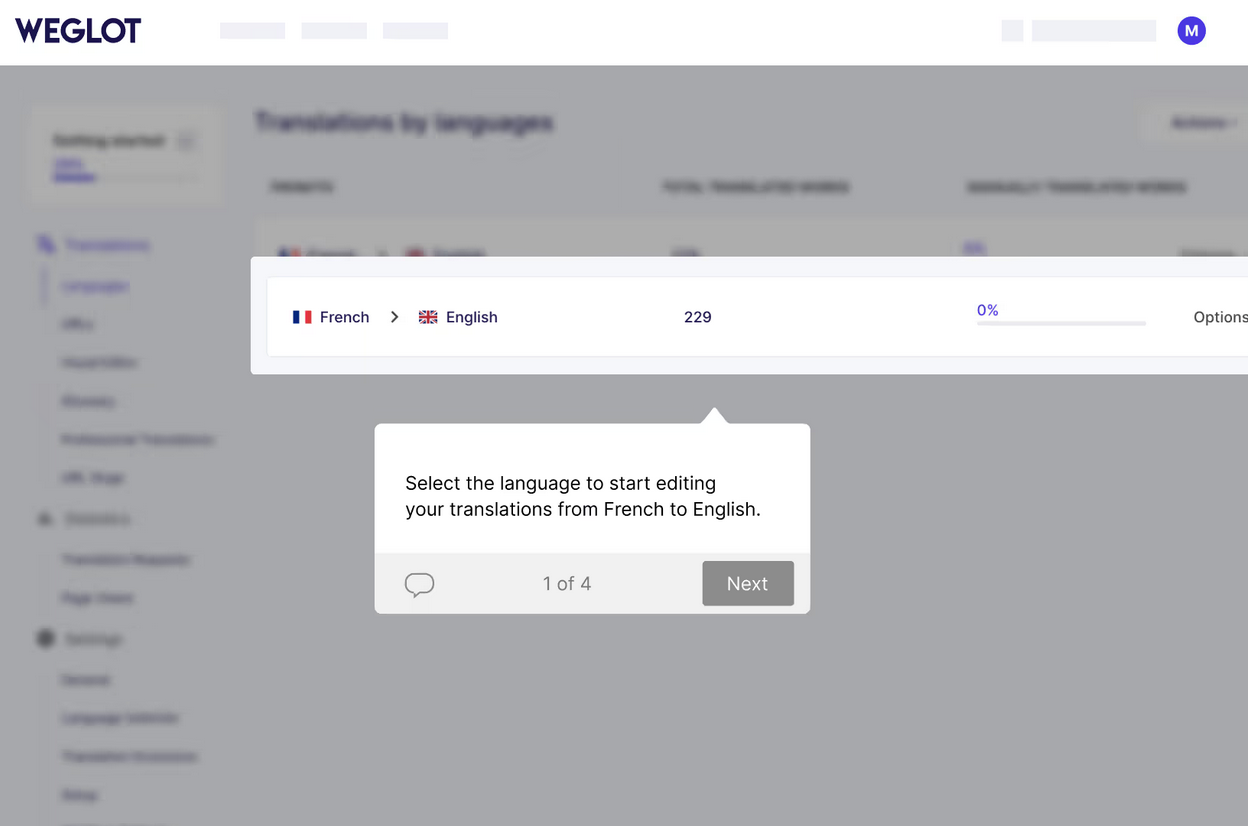
Translation dashboard via Weglot
Key features: * No Code Install * Real-time Syncing * Visual Translation Editing * Multilingual SEO * Localized Customer Journey
GTranslate
Google’s very own translation platform, GTranslate, is known for its speed and robust translation features at a reasonable price.
For starters, it uses AI-powered Google Translate to create translations that sound more natural and match the local standard. It can also host languages, which means these can be hosted on Google's servers instead of overloading your main website with several versions in different languages. In effect, GTranslate ensures faster loading time and easier search engine indexing.
GTranslate leverages Google’s robust ecosystem, making it one of the fastest translation tools in the market. It’s also the cheapest, with a monthly premium membership starting at $9.99.
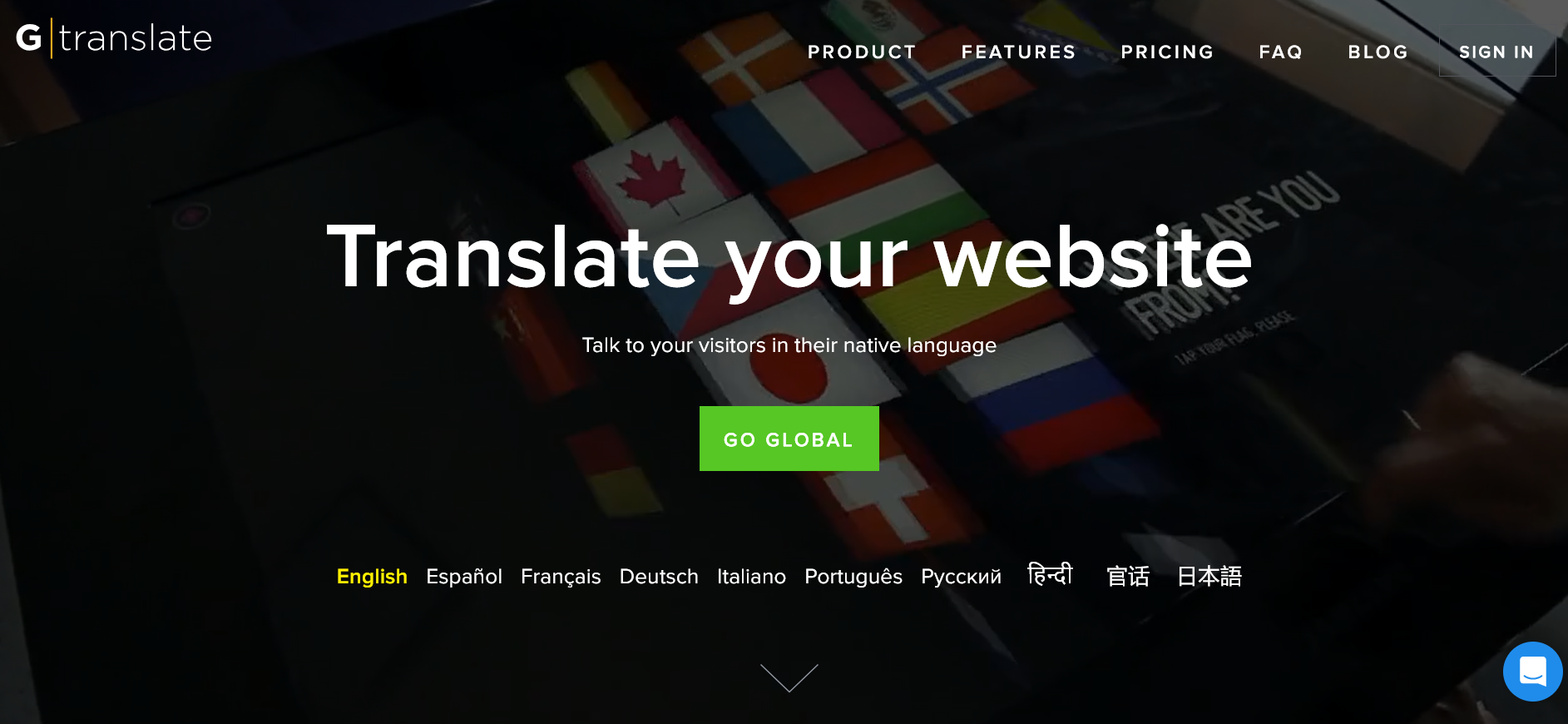
Website translator homepage via GTranslate
Key features: * AI Neural Translation * Translation Editing * Language Hosting * URL Translation * Search Engine Indexing
Transifex platform
Are you working on a big multilingual web project? Transifex’s more advanced features, like intelligent string management and customizable workflows, may allow for more precise control and constant updates. It allows for accuracy and quicker project turnaround.
The translation platform also gives its users deeper control and access to developers. These features make Transifex an ideal translation solution for scaling up your website.
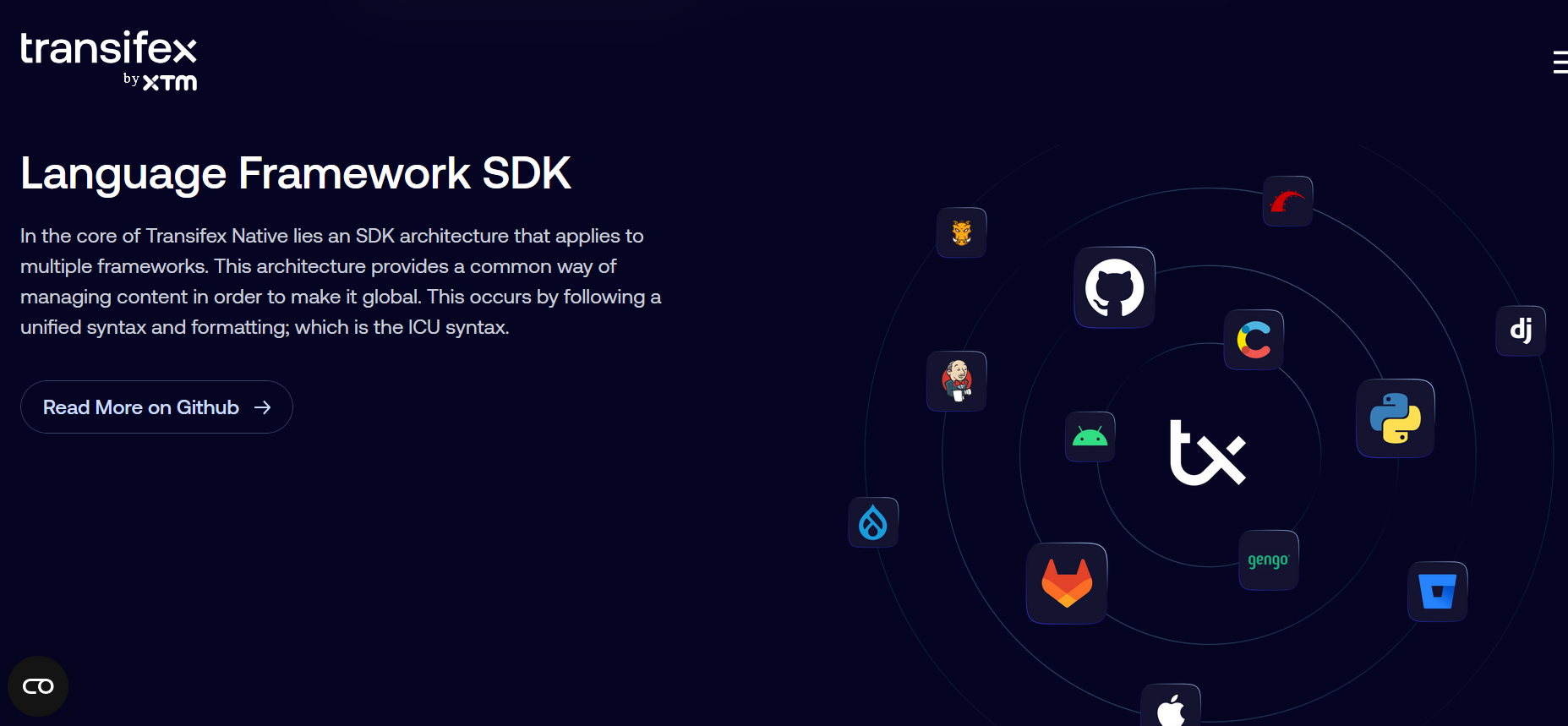
Over-the-air SDK architecture via Transifex
Key features: * Intelligent string management * Over-the-Air SDKs * Large pool of language support * Customizable workflows
Choosing the proper translation plugin or platform for your organization can be overwhelming. So, it’s essential to know your priority. It also pays to balance features and capabilities, like accessibility, translation quality, ease of use, SEO, and customer support, with your available resources. You may also benefit from using multiple platforms or plugins to manage your translation content effectively.
Of course, you can always work with trusted website design agencies to handle your design and translation needs.
Technical Setup for Multilingual Websites
Designing an effective multilingual site requires the right domain strategy, hreflang tags, and URL structure.
Domain strategy: subdirectory vs. subdomain vs. ccTLD
Domain strategy can make a massive difference to your website’s visibility. Hence, it’s crucial to identify what your website needs: a subdirectory, a subdomain, or country-code top-level domains (ccTLD).
| Domain strategy | Subdirectory | Subdomain | ccTLD |
|---|---|---|---|
| Advantages< |
|
|
|
| Disadvantages |
|
|
|
Implementing hreflang tags
Hreflang tags help search engines determine which version of a page should pop up based on the language and location of the user. Below are some strategies to optimize hreflang tags for better SEO and UX:
- Make sure you use the correct language and country codes so search engines can identify exactly who the page is for. For example:
hreflang=”zh-CN”, where‘zh’is the language code for Chinese and‘CN’is the country code for China. - Don’t forget to place hreflang tags in the HTML head or sitemap. This makes it easier to manage and speed up page load time.
- Avoid confusion by self-referencing hreflang tags.
Choosing the best URL structure
How you structure the URL of your multilingual website can affect your SEO efforts. If you are dealing with more than three languages, keep them organized by putting each language version in a folder. This enables search engines to crawl through your content and boost visibility easily.
It’s also crucial to keep your URL short and use descriptive keywords for better ranking. For instance, if you sell multiple bag models, use yourbrand.com/en/bagsummer instead of yourbrand.com/en/product2487368.
Finally, leverage automated URL rewriting tools to implement consistent language-specific URLs. This will reduce human error and time spent manually updating content across language versions.
Breaking Barriers With Multilingual Websites
Websites are not mere product catalogs, but powerful tools for creating meaningful customer connections. Failing to strategize a multilingual presence risks losing a high-potential customer base and falling behind competitors.
In this article, we have discussed how effective multilingual websites start by identifying target languages, translating key content, and selecting the right platform. However, a crucial next step is to leverage an expert website design firm that ensures a memorable multilingual user experience.
Invest in a multilingual website and future-proof your global growth. It breaks down language barriers and helps you stay ahead of the competition.
Sep 17, 2025
